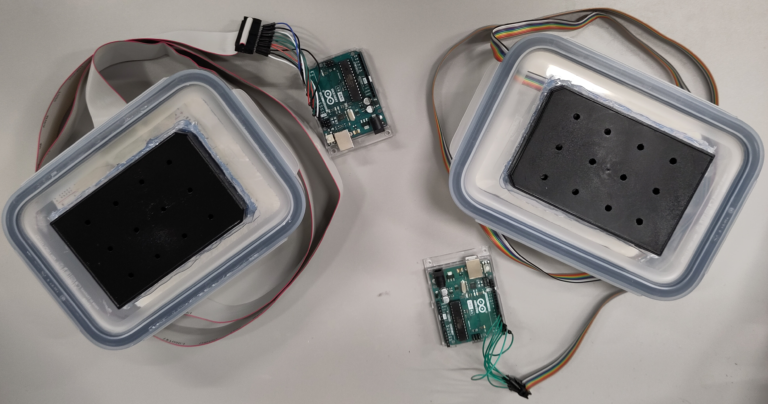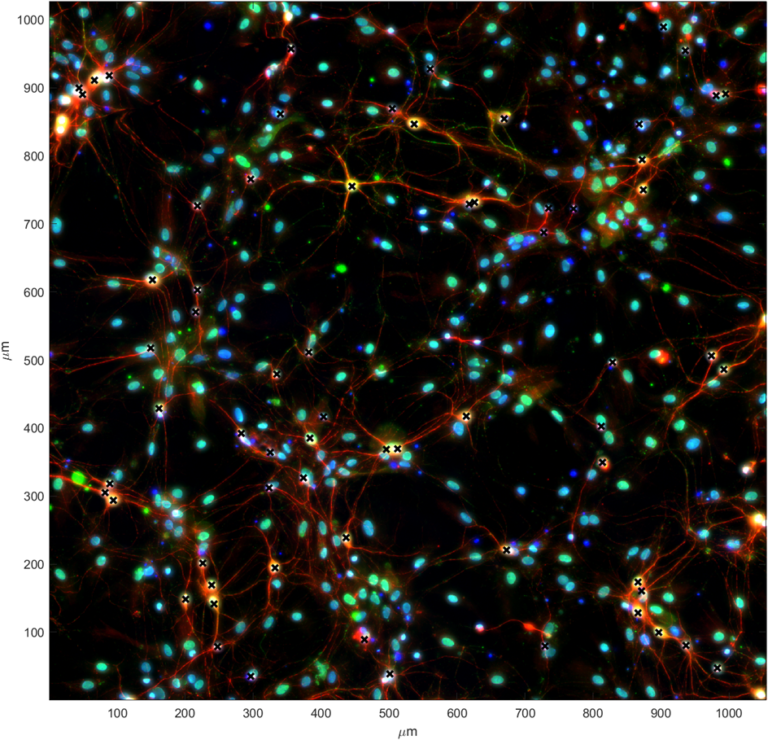Development of an LED Array for Optogenetic Long-Term Stimulation of Neuronal Networks in Vitro
During my time as a bachelor student at the Institute for Microsystems Technology (IMTEK), I was part of Professor Dr. Ulrich Egert’s research group. Their focus was on activity-dependent network growth in neuronal networks. A macro image of a neuronal network is featured below. I was tasked with the creation of an optogenetic stimulation rig – an array of LEDs which could be programmed with a variety of pulse times and frequencies. This array had to be compatible with the cell culture carriers; both for ease of use and to save time. Below, the two prototype stimulators I created are pictured.

Experiments were conducted with these stimulators and cultured rat brain tissue. These cell cultures were treated with a unique channelrhodopsin, making them reactive to UV-light. The aim of these experiments was to investigate the effects of long-term optogenetic stimulation on neurons during homeostatic, activity-dependent network development.
The first part of my work describes the development of the platform, its functional requirements, the construction, programming and realization of two prototypes. The second part discusses the experiment conducted with both prototypes as well as experiments conducted with a micro-electrode array (MEA). The purpose of the MEA experiment was to assess the effectiveness of optogenetic stimulation in dependence of the distance between LED and neuronal network. The electrophysiological, optogenetic and microanatomic processes and analysis methods used are described. Similarly, the morphological effects of long-term stimulation with the platform on developing neuronal networks are discussed.
You can download and read my full thesis here:
Below, you can see a portion of a neuronal network, circa 1000 square microns in area. Each ‘X’ marks a neuron, but there are some glitches and image artefacts. Red and green lines indicate dendrites and axons, which are the main communication channels of the brain. Blue dots denote the nuclei of neurons as well as of astrocytes and other cells.

